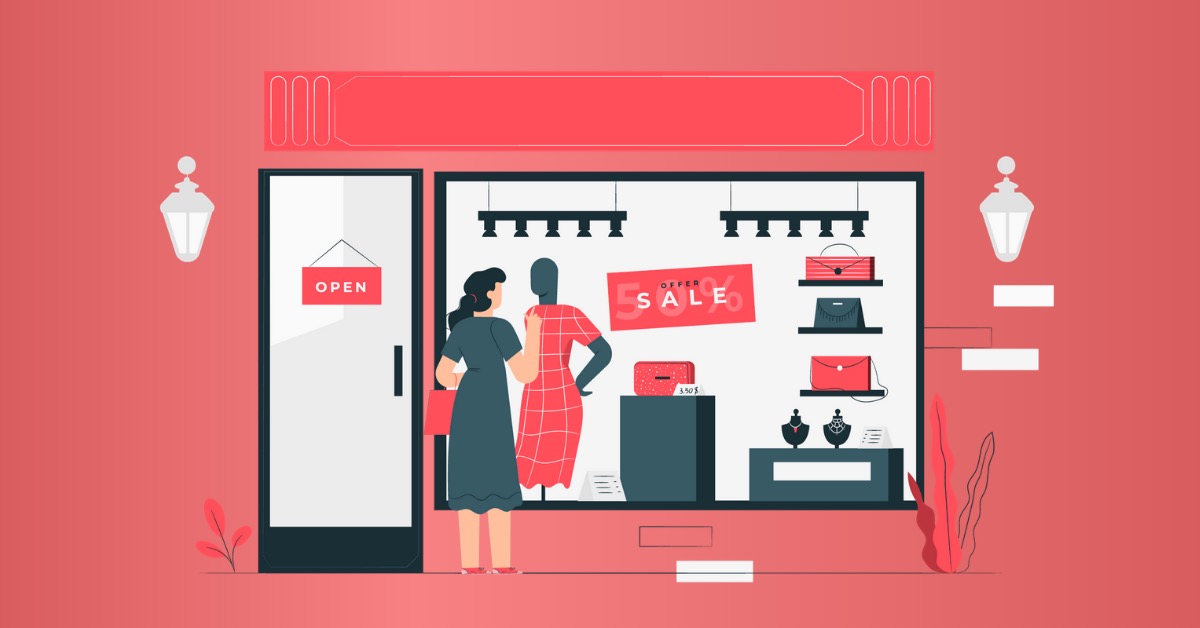According to a research by Salesforce, consumers of various ages state that going shopping in physical stores remains their first choice. These include 62% of Baby Boomers and 58% of Gen-Zers. So while you are reaching people online, try not to take your attention off the physical customer experience. Let’s back this opinion with some worthwhile data:
- The retail industry is the largest private-sector employer in the US.
- In 2018, the overall revenue from retail sales in the US was $6 trillion.
- In 2019, 90% of retail sales are happening in physical stores.
- 75% of buyers prefer to buy from brands that personalize the purchase experience.
- 54% of brands recognize customer experience as the most important priority.
- 49% of consumers note that not being able to try a product is one of their least favourite aspects of online shopping.
How to improve your in-store efficiency
While analysts, researchers and tech domain leaders are in a position of recommending so many valuable tips, but we would like to highlight a few which are feasible regardless of the retail store size or model.
Here are a few ways that you can use retail to boost your in-store efficiency.
1. Use analytics to boost customer experience
Smart analytics for retailers are designed to process and interpret data gathered from various sources like video camera feeds, beacons, Wi-Fi, and POS systems. These solutions organize the data into clear, actionable reports and visual graphs. With these insights, retailers can identify which areas of their business are underperforming and require improvement. Ranging from marketing to operations, it helps you to give your consumers a better customer experience.
2. Utilise software for a streamlined scheduling
Cloud-based employee scheduling software saves you the trouble involved in shift schedules. This software organizes the entire process by automatically matching workers with available shifts. You receive alerts when there is a conflict in schedules, and they also allow you to turn past successful lineups into templates for reuse. Employees also get the opportunity to decide whether to accept, reject, or swap shifts on their own. However, you can monitor and keep employees accountable by sending out scheduling notifications via text, email, or in-app messages.
3. Let customers handle their transactions
As mentioned, numerous shoppers who enjoy the entire in-person shopping experience resort to online shopping due to the dread of long, slow checkout lines. Some shoppers also end up abandoning their purchases out of frustration. You may want to consider retail innovations such as mobile point-of-sale systems, contactless payments, QR codes, etc., to help prevent this experience in your shop. Your customers can then make payment in seconds from their mobile devices or with their debit and credit cards. You can learn more about contactless payments here.
4. Drive real-life traffic
Consider getting on Google Maps listings to help you drive real-life traffic into your store. When you get a detailed listing on Google Maps, the rate at which you may be losing customers to nearby stores will reduce. This is because both locals and tourists receive suggestions on places near them to purchase from, using Google Maps.
5. Boost in customer engagement
When you attach beacons to the walls and ceilings of your store, customers with the required apps on their phones receive messages via Bluetooth. Some of these messages include notifications on exclusive deals or offers, recommendations for available products as they walk through the store, and even welcome messages upon entry. Beacons also guide customers through the aisles, so they have no difficulty finding products.
Over to you…
As stated above, the fact remains that technology is the primary tool being used to improve in-store efficiency, so don’t be afraid to make such technological investments. By doing so, you will be able to measure and properly manage your business goals to give your customers the best and also make more profit.
ⓘ As part of our ongoing support for startups and SMEs, LAFFAZ Media publishes feature and resource articles that may include references and links to external websites. These inclusions are selected at our editorial discretion to provide valuable information or suggestions to our readers. LAFFAZ Media does not control, endorse, or assume responsibility for the content or practices of external websites. For more details, please refer to our Terms and Conditions.





